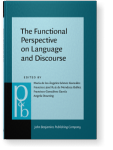The adverb truly in Present-Day English
In comparison with the semantically and pragmatically related adverbs really,
actually and in fact, the adverb truly has been studied much less extensively.
One reason for the neglect may be its relatively low frequency. This is obvious if
one consults the British National Corpus (BNC). This article takes a close look
at truly on the basis of a sample of 200 instances from the BNC. It looks at the
relative frequency and meaning of the various syntactic patterns in which it
occurs in PDE. Lenker (2007) notes that in her diachronic corpus truly occurs
as a clause-integrated manner adverb, a clause-integrated emphasiser, a propositional
modifier, and a discourse marker. The present article compares these
findings with the usage of truly in PDE. It also examines parallels and differences
with the adverb really.
References (14)
References
Biber, Douglas, Stig Johansson, Geoffrey N. Leech, Susan Conrad, and Edward Finegan. 1999.
Longman Grammar of Spoken and Written English
. London: Longman.
Bolinger, Dwight. 1972.
Degree Words
. The Hague: Mouton. 

Butler, Christopher S. 2008b. “The Subjectivity of Basically in British English – A Corpus-based Study.” In
Pragmatics and Corpus Linguistics
, ed. by Jesús Romero-Trillo, 37–63. Berlin: Mouton de Gruyter.
Davies, Mark. 2004.
BYU-BNC
. (Based on the British National Corpus from Oxford University Press). Available online at [URL].
Lenker, Ursula. 2007. “Soþlice, forsoothe, truly – communicative principles and invited inferences in the history of truth-intensifying adverbs in English.” In
Methods in Historical Pragmatics
, ed. by Susan Fitzmaurice, and Irma Taavitsainen, 81–106. Berlin: Mouton de Gruyter. 

Paradis, Carita. 2003. “Between Epistemic Modality and Degree: The Case of Really.” In
Modality in Contemporary English
, ed. by Robert Facchinetti, Manfred Krug, and Frank Palmer, 197–220. Berlin: Mouton de Gruyter.

Paradis, Carita. 2008. “Configurations, Construals and Change: Expressions of Degree.
” English Language and Linguistics
12: 317–343.
Peters, Hans. 1994. “Degree Adverbs in Early Modern English.” In
Studies in Early Modern English
, ed. by Dieter Kastovski, 269–288. Berlin: Mouton de Gruyter.

Quirk, Randolph, Sidney Greenbaum, Geoffrey N. Leech, and Jan Svartvik. 1985.
A Comprehensive Grammar of the English Language
. London: Longman.
Willems, Dominique, and Annemie Demol. 2006. “Vraiment and Really in Contrast. When Truth and Reality Meet.” In
Pragmatic Markers in Contrast
, ed. by Karin Aijmer, and Anne-Marie Simon-Vandenbergen, 215–235. Amsterdam: Elsevier.
Cited by (2)
Cited by two other publications
Reuter, Kevin, Lucien Baumgartner & Pascale Willemsen
2024.
Tracing thick and thin concepts through corpora.
Language and Cognition 16:2
► pp. 263 ff.

Núñez-Pertejo, Paloma
2023.
Practically impossible: The development of an English approximator.
Studia Neophilologica 95:1
► pp. 63 ff.

This list is based on CrossRef data as of 24 july 2024. Please note that it may not be complete. Sources presented here have been supplied by the respective publishers.
Any errors therein should be reported to them.
